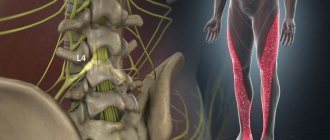Fetoplacental insufficiency: definition
During conception, together with the fetus, the placenta or baby's place, as it is popularly called, simultaneously forms and develops. This is a unique temporary organ; it appears only during pregnancy, and when the child is born, the placenta follows. It performs the most important functions:
- filters toxins and harmful substances and prevents them from reaching the baby;
- provides the fetus with nutrition and oxygen and removes carbon dioxide;
- produces the synthesis of hormones responsible for the course of pregnancy;
- responsible for the safety of the fetus.
Sometimes it happens that the placenta stops performing some function or is completely switched off, that is, it ages earlier than expected, nutritional metabolism and blood flow are disrupted - this is called fetoplacental insufficiency.
Treatment of placental insufficiency
There are currently no specific treatments for placental insufficiency, since there are no drugs that selectively improve uteroplacental blood flow. That is why all measures to combat placental insufficiency are aimed at prevention. If the patient is at high risk for the development of placental insufficiency, from early pregnancy she is prescribed medications whose effectiveness is well proven and which prevent the early development of severe placental dysfunction.
If, during additional methods of assessing the condition of the fetus, initial disturbances in the supply of oxygen to the baby are detected, drug treatment is carried out aimed at increasing the flow of blood and oxygen through the placenta and mandatory control examinations during the therapy. If the changes are serious and the baby experiences a severe deficiency of oxygen and nutrients, his condition suffers, then in such cases an emergency delivery is performed.
Causes
Numerous factors influence the development of FPN:
- diseases of the thyroid gland, hypothalamus (diabetes mellitus, asthma, heart problems and others);
- Iron deficiency anemia provokes the development of FPN during pregnancy. The body at this time needs double the amount of iron, often a deficiency occurs, which leads to dysfunction of the blood flow, coagulation, and this can disrupt blood circulation in the placenta;
- infectious diseases and infections. In the early stages they can lead to miscarriage, and in the second and third trimester to pathology of the child’s place;
- abnormal structure of the uterus, surgical operations and diseases of the female organs (fibroids, endometriosis and others);
- multiple pregnancy;
- late gestosis;
- Rhesus conflict;
- placenta previa;
- poor nutrition of women;
- abuse of alcohol, cigarettes, drugs and medications.
The list of reasons is extensive and therefore, in order to monitor the situation and the development of pregnancy, you need to visit a doctor in a timely manner and undergo all recommended examinations.
For several years now, prenatal screening has been actively used; it is a set of procedures (ultrasound, biochemical blood test, examination of the patient), which makes it possible to identify pathologies in the early stages.
How does FPN occur?
Fetoplacental insufficiency is a pregnancy pathology in which placental blood flow is disrupted. The presence of FPN can be suspected by changes in the frequency and strength of the baby's movements. A sharp increase or decrease in fetal movements, and even more so their disappearance, often indicates an unfavorable condition of the baby, hypoxia and placental insufficiency.
The consequences of this pathology are immediate and very dangerous for the fetus, because it is through the placental blood flow that nutrients and oxygen are delivered to the baby. When the speed and level of blood flow decreases in any part of the mother-placenta-fetus system, the baby begins to lack the substances necessary for normal growth and development. With long-term or rapidly developing FPN, not only the development, but also the life of the baby is threatened.
What reasons can lead to disruption of the functioning of an organ that is so important for mother and baby? Most often, FPN develops against the background of acute and chronic diseases of the mother, pregnancy pathologies, or diseases of the placenta itself. Here are the most common risk factors for developing FPN.
- Extragenital (not related to gynecology) diseases of the mother. This includes cardiovascular failure, arterial hypertension (increased blood pressure), kidney pathologies (acute and chronic pyelonephritis, glomerulonephritis, urolithiasis, renal failure), endocrine diseases (diabetes mellitus, pathology of the adrenal glands, thyroid gland, pituitary gland), etc. All These diseases affect the speed and level of blood flow in the mother's body, which, in turn, causes a decrease in placental blood flow.
- Diseases of the genital area of a pregnant woman - endometritis (inflammation of the lining of the uterus), inflammation of the appendages, sexually transmitted diseases (ureaplasmosis, mycoplasmosis, chlamydia, herpes, cytomegalovirus, etc.). Infectious agents and their toxins that penetrate the placental barrier are retained by the placental tissue. In places where pathogens invade, pockets of inflammation form, in which blood circulation normal to the placenta is disrupted.
- Pathologies of pregnancy. The most common cause of placental insufficiency in this group is gestosis. One of the manifestations of this pathology is a persistent increase in blood pressure in the blood vessels, which, of course, very quickly affects the level of placental blood flow. Another reason is a violation of hemostasis (the ratio of factors of the coagulation and anticoagulation system of the blood, providing the necessary viscosity and speed of movement through the vessels), often detected in the second and third trimester. Less commonly, placental insufficiency develops against the background of prolonged severe anemia of pregnant women, a disease characterized by a decrease in the level of hemoglobin in the blood.
- Pathologies of the placenta. Like any other human organ, the placenta itself can also become diseased. This disease is called placentitis and is expressed in significant swelling of the placenta and disruption of placental blood flow. The cause of placentitis is mainly viruses that can penetrate the placental barrier. Sometimes foci of inflammation are limited to certain areas of the placenta; in this case, as a result of the disease, petrificates are formed at the site of inflammation - foci of calcification. A large amount of petrificates also impedes placental blood flow.
- Anomalies in the development of the placenta. This includes hypotrophy (“skinny” placenta), additional placental lobules, partial detachment and improper attachment of the placenta.
Classification of FPN
FPN by period of education:
- Primary – develops before the 16th gestational week, the main reasons being problems in implantation and placentation.
- Secondary - occurs after 16 weeks due to external unfavorable factors.
FPN by stage of development:
- Acute form - develops quickly and at any time during pregnancy, even the formation of pathology during childbirth is possible. The organ stops supplying oxygen, resulting in hypoxia and the threat of death for the child. More often this occurs due to thrombosis, abruption, or placental infarction.
- Chronic form - develops mainly due to problems in the blood circulation of the uterus-placenta. The pathology forms in the second trimester and actively manifests itself in the last weeks of gestation.
The most common is chronic placental insufficiency; it is divided into several forms:
- compensated – not dangerous to the child’s life and is stopped by the body’s defense mechanism. With such a diagnosis, the doctor manages the pregnancy more carefully and, if necessary, prescribes therapy;
- decompensated - poses a threat to the development of the fetus, easily bypasses protection and requires treatment. Can cause hypoxia, developmental delays and cause pathologies of the heart and blood vessels;
- subcompensated - this form does not respond to protective mechanisms and causes complications in the fetus (pathologies and diseases), disrupts the normal course of pregnancy;
- critical – the most dangerous. The functioning of the placenta is almost completely disrupted and the death of the fetus is inevitable.
FPN degrees:
- 1 – distinguish 1a – pathology due to impaired blood flow in the uterus-placenta and 1b – impaired in the form of fetus-placenta;
- 2 – dysfunction of blood flow in both forms: uterus-placenta and fetus-placenta;
- 3 – critical degree. The blood flow in the fetus-placenta form is disrupted, and the uterus-placenta can either function or work, but not fully.
Therapy, the life of the child and his development depend on the type, form and degree of pathology.
AMGF (alpha-2 microglobulin fertility, PP14)
AMHF is a specific protein of the reproductive system of women and men. In women, AMGF is synthesized in the epithelium of the endometrial glands of the uterus in the luteal phase of the menstrual cycle and in the decidual tissue of the placenta. Synthesis and secretion in the endometrium and placenta depend primarily on the level of progesterone. In healthy non-pregnant women, serum protein concentrations range from 8 to 40 ng/ml, with a maximum in the luteal phase of the cycle. AMHF is present in significant quantities (2-16 mcg/ml) in the menstrual blood of both fertile women with a normal menstrual cycle and women suffering from infertility while maintaining ovulation. Thus, the presence of AMHF in menstrual blood is an indicator of past ovulation.
Determination of the AMHF content in uterine bloody secretions after early spontaneous abortions showed that during pregnancy loss, the concentration of AMHF is 50-100 times higher than the protein level in normal menstrual blood. Therefore, the AMHF test can be used for the differential diagnosis of uterine bleeding and establishing the cause of female infertility. A sharp increase in the content of AMHF in the blood serum is observed in severe endometriosis. In chronic endometritis, a decrease in the content of AMHF in endometrial secretions was noted on average by 5 times compared to the norm. This decrease was especially pronounced in chronic endometritis with luteal phase deficiency (more than 20 times compared to the norm). During the anovulatory cycle, AMHF was not detected in endometrial secretions.
When pregnancy occurs, serum AMHF levels increase rapidly, reaching a maximum between 6 and 12 weeks. After 16 weeks, the concentration of AMHF decreases and reaches a plateau starting at 24 weeks of pregnancy. In the first trimester, the level of AMHF in the mother's blood serum stops increasing or falls with the threat of miscarriage even before the onset of clinical manifestations. Since the level of AMGF is extremely individual, it is advisable to study it in the first trimester in dynamics 2-3 times with an interval of 2-3 weeks.
Symptoms
There are no identical and exact signs of FPN. It all depends on the form of the pathology. Naturally, in case of acute insufficiency, the symptoms cannot be ignored: the woman’s well-being changes, bleeding begins, and the child suddenly calms down and stops moving.
The chronic form proceeds calmly, only slight bleeding is possible periodically, and the size of the abdomen does not correspond to the norm for the duration of pregnancy.
That is why a woman must attend all prescribed ultrasounds and screenings. It is with the help of these procedures that the doctor can assess the functionality and condition of the placenta.
Kasabulatov N.M.
It is currently known that the most common cause of disturbances in the condition of the fetus during pregnancy is placental insufficiency (PI), which is the main cause of intrauterine hypoxia, delayed growth and development of the fetus, and its injuries during childbirth [4,14,8].
Placental dysfunction can occur under the influence of various damaging factors - endocrine, hypoxic, toxic, infectious; due to obstetric and extragenital pathology of the mother, environmental and pharmacological influences during pregnancy [1].
In clinical practice, primary and secondary PN are distinguished
Primary PN is characterized by changes in the structure, location, attachment of the placenta and maturation of chorionic villi. Secondary PN is characterized by involutional-dystrophic and inflammatory changes in the placenta, developing in the II–III trimesters of pregnancy.
PN can have both an acute and chronic course. Acute PN is determined by disturbances of the uteroplacental circulation. It often develops against the background of extensive infarctions and premature abruption of a normally located placenta, resulting in fetal death and termination of pregnancy. Chronic PN occurs as a result of a violation of compensatory-adaptive mechanisms in combination with circulatory disorders and involutionary-dystrophic processes [13,15].
PN is also divided into relative (compensated) and absolute (decompensated). Compensated PN does not require treatment, and pregnancy in these cases can result in timely birth of a viable and healthy child. Failure of one of the links in the physiological adaptation of the maternal body to pregnancy can manifest itself as hypertensive disorders, acute (placental abruption) or chronic PN, intrauterine fetal growth restriction (IUGR). The nature of the adaptive-homeostatic reactions of the placenta depends on the cause of PN and differs in extragenital and obstetric complications [13]. Absolute placental insufficiency occurs in severe form and is accompanied by IUGR and fetal hypoxia (up to its intrauterine death). Pregnancy in such women often occurs against the background of the threat of miscarriage.
There are two main forms of chronic placental insufficiency
1) a violation of nutritional function (trophic insufficiency), in which the absorption and assimilation of nutritious products, as well as the synthesis of the fetus’s own metabolic products, are impaired;
2) respiratory failure due to impaired transport of oxygen and carbon dioxide. Both forms of PN can exist independently or in combination. In the pathogenesis of PN, disorders of the uteroplacental and fetal placental circulation, metabolism, synthetic function and state of the cell membranes of the placenta are distinguished. With pathology of the uteroplacental circulation, there is a disturbance in the flow of blood into the intervillous space, difficulty in the outflow of blood from it and a change in the rheological and coagulation properties of the uterine blood. The most important pathophysiological changes in the body during chronic PN in a pregnant woman include hypovolemia and decreased organ perfusion. At the same time, the sensitivity of vascular elements to circulating pressor agents increases and the coagulation cascade is activated, which leads to a simultaneous decrease in the perfusion of the intervillous space [13,15,17,19].
Reocoagulation disorders play an important role in disrupting the hemodynamics of the placenta. Hypercoagulation occupies a special place in the pathogenesis of PN. The initial physiological hypercoagulation of the blood, which reaches its maximum development by the end of the third trimester, provides local hemostasis in the uterus after childbirth. During pregnancy, the body develops hypervolemia and decreases peripheral vascular resistance. These mechanisms are adaptive and protective in nature in healthy pregnant women. In the case of pathology leading to activation of the hemostatic system, they lose their protective function and contribute to the worsening of PN [17,19]. During pregnancy complicated by intrauterine growth retardation, the number of trophoblastic elements penetrating the myometrium decreases. Incomplete trophoblast invasion into the maternal spinal arteries causes insufficient trophoblast perfusion and changes in the secretion of humoral factors. The development of modern methods for studying the state of the fetoplacental complex in the dynamics of pregnancy and childbirth allows for timely diagnosis and treatment of the main clinical forms of fetal suffering - intrauterine growth retardation (hypotrophy) and/or its chronic hypoxia.
Prenatal diagnosis of these conditions is established on the basis of echography and fetometry of the placenta, cardiotocography, Doppler flowmetry in the vessels of the “mother-placenta-fetus” system, cytology, amnioscopy, hormonal methods (determination of free estriol, human chorionic gonadotropin, placental lactogen). Postpartum diagnosis of the placenta is carried out mainly using morphometric and morphological methods. The Doppler ultrasound method, which uses direct measurements of blood flow in various vascular zones of the mother-placenta-fetus system in dynamics, allows one to assess the state of uteroplacental blood flow and therefore has important diagnostic and prognostic significance in the group of pregnant women at high perinatal risk. A directly proportional relationship with a high correlation coefficient was noted between the degree of hemodynamic disturbances in the mother-placenta-fetus system and the incidence of fetal growth retardation, intrauterine hypoxia, surgical delivery by cesarean section, severe condition of the newborn and perinatal losses. The final diagnosis is established taking into account the complementary data of a comprehensive study: echography, CTG and Doppler measurements [9].
Prevention and treatment of PN and intrauterine growth retardation
include measures aimed at improving uteroplacental blood circulation and microcirculation, normalizing gas exchange in the mother-fetus system, improving the metabolic function of the placenta, and restoring impaired function of cell membranes.
In recent years, the arsenal of drugs used for PN has expanded significantly. The effect of the drugs used is realized mainly at the level of the microvasculature of the placenta. In this case, agents are conventionally identified that act on the vascular component of the blood flow and on the rheological properties and anticoagulant potential of the blood. Medicines that affect the vascular component of the uteroplacental vascular system include adrenergic agonists. Their effect is due to a decrease in the tone and amplitude of uterine contractions, general peripheral vascular resistance, diastolic blood pressure, and an increase in heart rate without a significant decrease in blood pressure (BP). Under their influence, pulse blood pressure and cardiac output significantly increase, and hemoperfusion of the uterus and feto-placental area increases. This group includes fenoterol, terbutaline, hexopenaline. With high activity of the uterine muscles and acute fetal hypoxia, intravenous administration of adrenergic agonists to the mother helps improve uteroplacental blood flow. The best effect from their use is achieved with a “fluid load” and cardiotonic agents. This treatment method is complemented by metabolic therapy, laser exposure, etc. [5,10,11,12]. To improve oxygen transport to the fetus, vasodilators and drugs that normalize microcirculation processes in the placenta and uterus (theophylline, xanthinol nicotinate) can be used. In recent years, drugs such as Actovegin, Instenon, and Troxerutin have found widespread use in the treatment of placental insufficiency. These drugs act on the pathogenetic links in the development of placental insufficiency , being involved in metabolic processes, participating in the regulation of energy supply, correcting the impaired compensatory capabilities of the mother and fetus [15].
To improve uteroplacental circulation, intravenous infusions of rheopolyglucin, dextrans, as well as drugs that improve the rheological properties of blood (heparin, fraxiparin) are also used. In recent years, efferent treatment methods (plasmapheresis) have begun to be used to treat PN. It is recommended to use ultraviolet blood irradiation, medical ozone, and laser therapy. Prevention and treatment of this pathology are most promising in early manifestations of PN. Improvement of ultrasound diagnostic equipment makes it possible to identify early, preclinical stages of placental dysfunction. Currently, the emphasis of perinatal care is shifting towards preventing the development of placental insufficiency. Therefore, it is especially important to find safe and effective means of preventing this pathology in women with complicated pregnancy. Treatment of pregnant women at high risk of PN is justified. First of all, these are pregnant women with intrauterine infection, gestosis, and autoimmune pathology. According to the literature, the most effective method for treating the initial manifestations of PN is the use of the cellular metabolism activator Actovegin a in combination with ß-mimetics [18]. Actovegin activates tissue metabolism, which improves trophism, and stimulates the regeneration process. The active substance is a deproteinized hemoderivative from calf blood with low molecular weight peptides and nucleic acid derivatives. Actovegin improves cellular metabolism by increasing the transport and accumulation of glucose and oxygen, enhancing intracellular utilization. These processes lead to an acceleration of ATP metabolism and an increase in the energy resources of the cell. Under conditions that limit the normal functions of energy metabolism (hypoxia, lack of substrate), and with increased energy consumption (healing, regeneration), Actovegin stimulates the energy processes of functional metabolism and anabolism. The secondary effect is increased blood supply. In cases of metabolic and blood supply disorders to the brain, for example, in cerebral insufficiency syndrome (dementia), the transport of glucose across the BBB and its utilization by cells deteriorate. The activity of pyruvate dehydrogenase and the concentration of acetylcholine also decrease. The use of Actovegin improves the transport and utilization of glucose, while an increase in oxygen consumption is observed. Under the influence of Actovegin infusions, central hemodynamic parameters significantly improve in pregnant women who had a hypokinetic type of blood circulation. At the same time, the total peripheral vascular resistance is significantly reduced and fetal-placental blood flow improves [6]. The use of Actovegin significantly improves the indicators of arterial and venous blood flow in the mother-placenta-fetus system, which makes it possible to reduce the frequency of early delivery in PN and adverse perinatal outcomes [2]. Infusion therapy with Actovegin has a pronounced therapeutic effect on the condition of the fetus developing under conditions of placental insufficiency, which is expressed in a significant improvement in blood flow in the fetal-placental vessels and the dynamics of its intrauterine growth. In addition, treatment with Actovegin promotes better tolerance of labor to the fetus. The positive effect of Actovegin on fetal-placental circulation is associated primarily with improved oxygen delivery, increased glucose perfusion and restoration of aerobic metabolism in the placenta [6]. Complex treatment of PN developing in the third trimester with Actovegin and Ginipral allows one to achieve satisfactory perinatal outcomes, despite concomitant extragenital pathology in the mother [3]. Falyants A.G., Zakharov I.V. [16] treated PN in 53 pregnant women with uterine fibroids. A complex of drugs was proposed that improved uteroplacental blood flow, each of which normalized individual parts of the impaired placental circulation and, in general, created a system for protecting the condition of the fetus. Treatment was carried out at gestational ages of 22–26 weeks and at 32–36 weeks. The complex included dipyridamole (tablet) - 25 mg 3 times a day. pentoxifylline 400 mg 1 dr. 2 times a day and Actovegin (tablet) – 0.2 g 3 times a day. In case of decompensation of PN, infusions of Actovegin and rheopolyglucin with pentoxifylline were carried out. Significant positive changes were obtained during control CTG and ultrasound examinations. There were no perinatal losses. Demidovich E.O., Ignatko I.V. [7] used Actovegin in the form of tablets 200 mg three times a day for three weeks to correct identified hemodynamic disorders in fetuses with growth retardation syndrome. For pregnant women with PN on the background of extragenital pathology, long-term gestosis, long-term threat of miscarriage and stage II fetal growth restriction syndrome, this drug was prescribed intravenously in the form of a 10% solution with sodium chloride (250 ml for a course of 7–10 procedures). The recommended regimen for using Actovegin for therapeutic purposes includes starting its use with intravenous drip administration of the drug every other day 5 times at a dose of 5 ml in 250 ml of 5% glucose or saline solution. Then continue taking the drug orally, 1 tablet 3 times a day for 3–4 weeks. In patients with recurrent miscarriage, prophylactic use of Actovegin is also possible. In this case, you can limit yourself to oral administration of the drug, 1 tablet 3 times a day for 2–3 weeks. Thus, Actovegin is one of the promising drugs, the use of which can achieve good results in the treatment and prevention of placental insufficiency. However, the problem of treating PN remains not fully resolved and requires further research in this direction.
Literature
1. Aylamazyan E.K. antioxidants in the complex therapy of late toxicosis and associated chronic fetal hypoxia // Obstetrics and Gynecology. 1991, No. 3, pp. 30–34.
2. Afanasyeva N.V., Strizhakov A.N. outcomes of pregnancy and childbirth with fetoplacental insufficiency of varying severity.// Issues of gynecology, obstetrics and perinatology. 2004, T. 3, No. 2, pp. 7–13.
3. Vozovik A.V. Correction of fetoplacental insufficiency in pregnant women with non-toxic nodular goiter. //Materials of the V Russian Forum “Mother and Child”, Moscow, 2003, 44–45.
4. Garmasheva N.L., Konstantinova N.N. Pathophysiological basis for the protection of human intrauterine development. L., 1985., 159 p.
5. Grishchenko V.I., Shcherbina N.A. Improving the diagnosis and therapy of perinatal pathology // Obstetrics and Gynecology. 1990, No. 10, pp. 3–6.
6. Gromyko G.L. Actovegin: Experience of use in obstetric practice./Edited by Ailamazyan E.K./St. Petersburg, 2000, 33–41.
7. Demidovich E.O., Ignatko I.V. Features of fetal renal blood flow in fetoplacental insufficiency. //Materials of the V Russian Forum “Mother and Child”, Moscow, 2003, pp. 56–57.
8. Kosheleva N.G., Arzhanova O.N., Gromyko G.L. et al. New approaches to the treatment of threatened premature birth // Bulletin of the Russian Association of Obstetricians and Gynecologists. 1996, No. 1, pp. 55–60.
9. Medvedev M.V. Clinical guidelines for ultrasound. 1996, Volume II.
10. Ordzhonikidze N.V., Klimenko P.A., Dzhivigelova G.D. et al. New in the treatment of pregnant women with fetal growth retardation syndrome // Obstetrics and Gynecology. 1996, no. 3, pp. 32–36.
11. Parashchuk Yu. S., Grishchenko O. V., Lakhno I. V., Shevchenko O. I. Fetoplacental insufficiency. Tutorial. Kharkov: KhSMU, 1999. 45 p.
12. Pestrikova T. Yu., Chizhova T. V., Petrichko M. I., etc. Management of high-risk pregnancy and childbirth. M.: Souvenir, 1994. 287 p.
13. Radzinsky V.E., Ordiyants I.M. Placental insufficiency in gestosis. // Obstetrics and gynecology, 1999; No. 1, pp. 11–6.
14. Savelyeva G.M., Fedorova M.V., Klimenko P.A. et al. Placental insufficiency. M, 1991, 276 p.
15. Sidelnikova V.M. Current problems of miscarriage. M., 1999, 138 p.
16. Falyants A.G., Zakharov I.V. Correction of placental insufficiency in pregnant women with uterine fibroids. //Materials of the V Russian Forum “Mother and Child”, Moscow, 2003, pp. 244–246.
17. Fedorova M.V. Placental insufficiency. // Obstetrics and gynecology, 1997; 6:40–3. 18. Shapovalenko S.A. Complex diagnosis and treatment of placental insufficiency in pregnant women at different stages of gestation. // Bulletin of the Russian Association of Obstetricians and Gynecologists, 2001, No. 2, pp. 43–7.
19. Salafia CM Placental pathology of fetal growth restriction. // Clin. Obstet. Gynecol, 1997; 40: 740–9.
Diagnostics
To make an accurate diagnosis of FPN, a comprehensive examination is carried out, including the following steps:
- the doctor examines the patient’s medical history, collects all data and complaints;
- external examination and measurement of the abdomen and weight to determine how the fetus is growing;
- smear analysis;
- Fetal ultrasound;
- CHT and phonocardiography;
- Dopplerography is the study of blood flow.
There is a risk group that includes certain categories of women who are more likely to develop FNP during pregnancy:
- age from 35;
- work in heavy production;
- poor and meager nutrition;
- multiple pregnancy;
- history of abortion, surgery, diseases of the female organs;
- having chronic diseases;
- abusing bad habits.
Such patients require increased attention.
Causes of low placenta during pregnancy
The location of this organ is determined by where the fertilized egg attaches to the endometrium of the uterus. This is where the placenta will form, and it is impossible to influence this at this stage of medical development. At the same time, several factors can be identified that directly or indirectly contribute to the appearance of such an anomaly:
- Anatomical abnormalities of the uterus. The shape of this organ directly affects where the fertilized egg will “float”. If a woman has congenital or acquired (for example, after surgery) disorders of the anatomical structure of the uterus, then the chances of low placentation increase significantly. This category also includes isthmic-cervical insufficiency, which consists in weakening the muscles of the uterine cervix, which is unable to withstand intrauterine pressure.
- Endometrial damage. These are disturbances in the structure of the uterine mucosa resulting from infections, curettage during abortion, difficult childbirth, cesarean section, etc. Also a common cause of low placentation is endometriosis (inflammation of the endometrium), benign and malignant tumor formations that disrupt the functioning of this layer .
- Fetal factor. The fertilized egg is fixed in the endometrium due to enzymes produced by the embryonic membranes. Sometimes this function is disrupted, and the embryo descends from the fallopian tube too low, embedding itself in the mucous membrane in the lower part of the uterus. Such situations especially often arise in cases of hormonal or endocrine disorders in a woman, inflammatory processes in the ovaries, uterine appendages and tubes.
- Repeated births. It has been noticed that with each subsequent pregnancy the risk of placenta previa increases, especially if the previous one was complicated. This is likely due to damage to the uterus or endometrium, as well as hormonal changes that occur in women as they age.
Other factors that contribute to a low-lying placenta during pregnancy include genetic predisposition, excess weight, smoking, drinking alcohol and other bad habits. Their presence in a woman gives grounds to classify her as a risk group, even if no pathology has yet been identified, and to prescribe special care and more careful monitoring of the state of pregnancy.
Therapy
There is no universal treatment regimen. This is due to the fact that pathology has many forms and types and can develop due to a variety of factors. Therefore, doctors in most cases send the expectant mother to the hospital to monitor the intensity of FPN and take correct measures.
Under no circumstances should you prescribe treatment on your own! At the first signs of malaise, a decrease in the number of movements, or bleeding, you should immediately consult a doctor.
Treatment
The main goal of therapy is to maintain pregnancy and timely delivery. Decompensated and acute forms of FPI are treated in a hospital setting.
Drug treatment:
- drugs that improve tissue metabolism;
- antispasmodics and tocolytics;
- intravenous drip administration of aminophylline;
- anticoagulants and drugs that reduce uterine tone;
- hormones;
- iron supplements.
The course of treatment is from six to eight weeks. The effectiveness of therapy is assessed using Dopplerography and ultrasound scanning of the placenta and fetus.
Complications
Placental insufficiency may not have a detrimental effect on the child if it occurs in a certain form. In acute cases and in severe cases, it can provoke the development of serious diseases:
- intrauterine developmental delay;
- hypoxia;
- pathologies of the heart, blood vessels, nervous system;
- death.
The gynecologist considers each case individually, and possible complications depend on many factors.
Methods for diagnosing FPN during pregnancy
If intrauterine developmental retardation is suspected, the examination helps determine the degree of fetal malnutrition, examine the state of uteroplacental blood flow and identify the causes of disorders. The following diagnostic techniques are used to detect FPN:
- Physical examination. It includes a weighing procedure, measurements of the patient’s VMR and abdominal circumference, as well as assessment of the motor activity of the fetus and listening to its heartbeat using a stethoscope. If abnormalities are detected, the obstetrician-gynecologist makes a preliminary diagnosis (oligohydramnios/polyhydramnios, child growth retardation) and refers the pregnant woman for further examination.
- Ultrasound of the fetus and placenta. It is used to assess the thickness and degree of maturity of the placenta, as well as to diagnose the fetometric parameters of the embryo: circumference of the chest, abdomen, head, fronto-occipital and biparietal (intertemporal) size, length of the limbs. The results obtained are compared with standard values corresponding to the gestational age.
- Vascular Doppler. The most accurate diagnostic method that allows you to identify disorders of the uteroplacental blood flow at an early stage. A scheduled check is scheduled twice: at 22 and 30-34 weeks of pregnancy. If there are medical indications or suspicion of FPN, the procedure is performed urgently at any stage of gestation.
- Cardiotocography. CTG is prescribed no earlier than 32 weeks of pregnancy. A functional test allows you to evaluate the functioning of a child’s heart muscle by measuring the rhythm and frequency of his heartbeat. The development of placental insufficiency is indicated by problems with the heart rhythm such as arrhythmia, tachycardia or bradycardia.
Based on the results of a comprehensive examination, the doctor assesses the condition of the fetus on a ten-point scale, compiling its biophysical profile. It takes into account indicators of respiratory movements, muscle tone and motor activity of the embryo, as well as the degree of maturity of the placenta and the amount of amniotic fluid.
A score of 8 points or higher indicates normal fetal development and the absence of fetoplacental disorders. With values of 6-7 points, the woman is prescribed an additional examination to confirm the accuracy of the diagnosis. A result of less than 5 points indicates acute hypoxia of the child, which is considered a direct indication for emergency hospitalization.
Prevention
Prevention methods are universal and available to everyone:
- healthy lifestyle;
- high-quality and vitamin-rich nutrition;
- good dream;
- physical activity, in the absence of contraindications;
- it is necessary to monitor the state of the reproductive system constantly, avoid abortions and diseases whenever possible;
- absence of stress and neuroses;
- Visit your doctor promptly during pregnancy and all medical procedures.
Of course, it is impossible to completely predict the development of some pathologies. But a healthy lifestyle, monitoring your own well-being and planning a pregnancy all increase your chances of safely carrying your baby to term.
Quite often, absolutely healthy women have problems during gestation; this may be hereditary, or some illnesses have worsened due to increased workload, so it is important to regularly see a doctor and notice even small changes in the child’s well-being and activity. Attentiveness will help to identify the pathology of FPN in a timely manner.
What is a low placenta?
Shortly before being born, the baby turns head down in the womb. This position provides him with a relatively easy exit from the genital tract. In this case, the placenta attachment site is normally located at the upper fornix of the uterine cavity. Thus, the path to the baby is blocked only by a thin film of the amniotic membrane, which easily breaks through during childbirth.
Pathology occurs when, before childbirth, the placenta is not located in the upper part of the uterus, but on the side or below, partially or completely blocking the cervical canal. This anomaly occurs quite often (in 10% of cases) in early pregnancy. But over time, as the child grows, due to the process of rising of the placenta, the passage is cleared. As a result, before childbirth, its pathological position is observed only in 0.5-1% of women in labor. Depending on the location of the placenta, its presentation is:
- Full. The placenta is located below, completely blocking the cervical canal. In this case, spontaneous childbirth is impossible and threatens the life of the child and mother due to the high probability of extensive bleeding.
- Incomplete. The placenta is located in the lower part, but shifted to the side, so it only partially covers the os of the uterus. This presentation also makes childbirth impossible and dangerous for the mother or baby due to the high risk of bleeding.
- Low. The placenta is located at a distance of 7 cm from the cervical canal, without blocking it. With this arrangement, childbirth is possible, but requires increased attention from doctors. If the distance from the placenta to the pharynx of the uterus is less than 7 cm, and it touches the edge of the pharynx, such a presentation is called marginal.
Lower presentation is the safest, but it is also an anomaly and certain risks for the mother and her child also exist with it. Therefore, during routine examinations, doctors pay great attention to monitoring the condition of the placenta. Using ultrasound, they determine its location on the anterior or posterior walls of the uterus, and also measure the distance from its edge to the cervical canal. If an anomaly is detected, tactics to save the baby and his mother are developed before birth.
Take the first step
make an appointment with a doctor!
Prevention and treatment
At present, unfortunately, it is not possible to completely relieve a pregnant woman from placental insufficiency using any therapeutic interventions. The means of therapy used can only help to stabilize the existing pathological process and maintain compensatory and adaptive mechanisms at a level that allows for the continuation of pregnancy until the optimal date of delivery. Therefore, it is very important to carry out prevention in women who have risk factors for developing placental insufficiency.
The leading place in prevention is the treatment of the underlying disease or complication, which may lead to placental insufficiency. An important condition is for the pregnant woman to follow an appropriate regimen: adequate rest (sleeping on the left side is preferable), elimination of physical and emotional stress, staying in the fresh air for 3-4 hours a day, and a rational, balanced diet. The course of prevention includes multivitamins, iron supplements, breathing exercises to increase oxygen delivery through the lungs, the use of amino acids, glucose, Galascorbine, potassium orotate, ATP, which serve as a direct source of energy for many biochemical and physiological processes.
With initial signs of placental insufficiency, treatment is possible in a antenatal clinic with a repeat ultrasound examination with Doppler 10-14 days after the start of treatment. With more severe placental insufficiency, especially in combination with other complications of pregnancy or general diseases of the mother, hospitalization in a hospital is required. The duration of therapy should be at least 6 weeks (in a hospital, with continuation of therapy in a antenatal clinic). If this pathology is detected and appropriate therapy is carried out in the second trimester, to consolidate the effect of the first course, treatment should be repeated at 32-34 weeks of pregnancy.
If indicators deteriorate during treatment, signs of decompensation of placental insufficiency appear, determined by a sharp deterioration in the condition of the fetus and the possibility of its death, emergency delivery by cesarean section is indicated, regardless of the gestational age.








